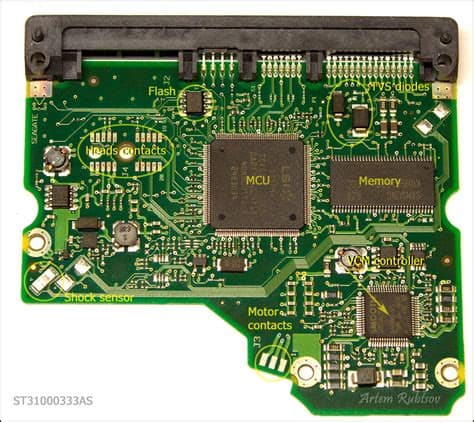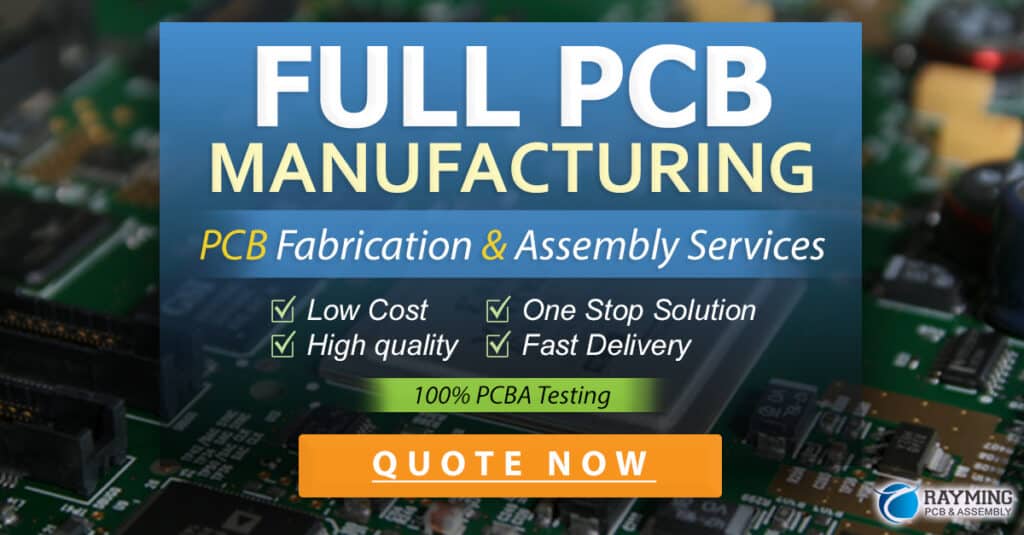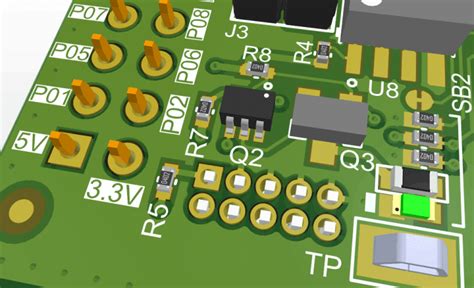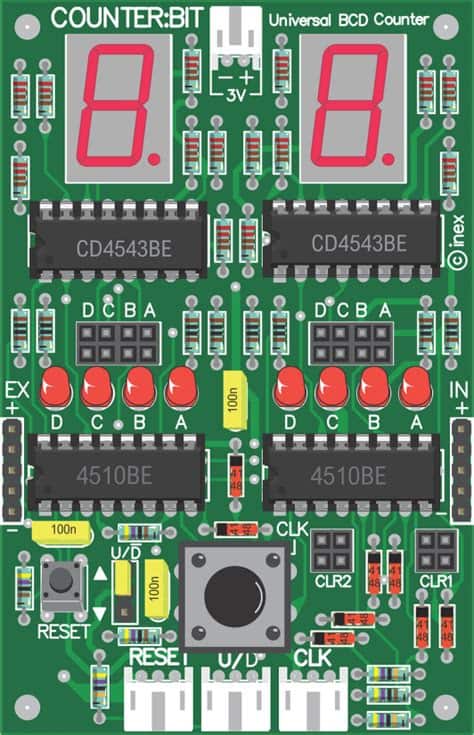Introduction
Designing a printed circuit board (PCB) can be an exciting and rewarding experience, but it can also be challenging, especially when it comes to finding the right electronic components. With the vast array of PCB Components available in the market, it can be overwhelming to choose the ones that best suit your project’s requirements. In this article, we will discuss various strategies and resources to help you easily find the electronic components you need for your next PCB design.
Understanding PCB Components
Types of PCB Components
Before we dive into the methods of finding PCB components, let’s first understand the different types of components used in PCB design.
-
Passive Components: These components do not require power to operate and include resistors, capacitors, and inductors.
-
Active Components: These components require power to function and include transistors, diodes, integrated circuits (ICs), and microcontrollers.
-
Electromechanical Components: These components have both electrical and mechanical functions, such as switches, relays, and connectors.
-
Display Components: These components are used for visual output and include LEDs, LCDs, and OLEDs.
-
Power Components: These components are used for power management and include voltage regulators, transformers, and batteries.
PCB Component Packages
PCB components come in various packages, depending on their size, shape, and mounting method. Some common PCB component packages include:
| Package Type | Description | Example Components |
|---|---|---|
| Through-Hole | Components with leads that are inserted into holes drilled in the PCB | Resistors, Capacitors, DIP ICs |
| Surface Mount (SMD) | Components that are mounted directly on the surface of the PCB | Resistors, Capacitors, SOT ICs |
| Ball Grid Array (BGA) | ICs with an array of solder balls underneath for high-density connections | Microprocessors, FPGAs |
| Quad Flat Pack (QFP) | ICs with leads extending from all four sides of the package | Microcontrollers, ASICs |
Understanding the different types of PCB components and their packages will help you narrow down your search and choose the right components for your design.

Strategies for Finding PCB Components
1. Determine Your Project Requirements
The first step in finding the right PCB components is to clearly define your project requirements. Consider factors such as:
- Functionality: What does your PCB need to do?
- Performance: What are the speed, accuracy, and power requirements?
- Size and Form Factor: What are the physical constraints of your PCB?
- Environment: Will your PCB be exposed to extreme temperatures, humidity, or vibrations?
- Budget: How much can you afford to spend on components?
By answering these questions, you can create a list of specific component requirements that will guide your search.
2. Consult the Schematic and Bill of Materials (BOM)
If you have a schematic and a bill of materials (BOM) for your PCB design, they can be valuable resources for finding the right components. The schematic shows the electrical connections between components, while the BOM lists all the components used in the design, along with their quantities, values, and part numbers.
Use the information from the schematic and BOM to search for components that meet the specified requirements. This will help ensure compatibility and proper functionality of your PCB.
3. Use Online Component Distributors
Online component distributors are a convenient and efficient way to find and purchase PCB components. Some popular distributors include:
- Digi-Key
- Mouser Electronics
- Newark
- Arrow Electronics
- Farnell (Element14)
These distributors offer extensive catalogs of components from various manufacturers, along with detailed product information, datasheets, and pricing. They also provide search filters and parametric search tools to help you find components based on specific criteria, such as package type, value, tolerance, and operating temperature.
To use an online distributor effectively:
- Create an account on the distributor’s website.
- Use the search filters and parametric search tools to narrow down your options based on your project requirements.
- Compare prices, availability, and lead times for the components you need.
- Check the minimum order quantities (MOQs) and any additional fees, such as shipping and handling.
- Place your order and wait for the components to arrive.
4. Explore Manufacturer Websites
Many component manufacturers have their own websites where you can find detailed information about their products, including datasheets, application notes, and reference designs. Some popular component manufacturers include:
- Texas Instruments
- Analog Devices
- Microchip Technology
- ST Microelectronics
- ON Semiconductor
Visiting manufacturer websites can be particularly useful when you need specific information about a component or want to explore alternative components with similar functionality.
To find components on a manufacturer’s website:
- Navigate to the product search or product selector page.
- Use the search filters or parametric search tools to find components that meet your requirements.
- Download datasheets, application notes, and reference designs for the components you are interested in.
- Check if the manufacturer offers sample programs or evaluation kits for the components you need.
5. Utilize Online PCB Design Communities
Online PCB design communities are great resources for finding information about PCB components, as well as getting advice and recommendations from experienced designers. Some popular communities include:
- EEVblog Forum
- Reddit (r/PrintedCircuitBoard, r/AskElectronics)
- DesignSpark Community
- SnapEDA Community
In these communities, you can:
- Search for existing discussions about the components you need.
- Post questions or requests for recommendations related to your specific project requirements.
- Learn from the experiences and insights shared by other designers.
- Discover new components or design techniques that you may not have considered before.
Remember to be specific and provide as much context as possible when posting questions or requests in these communities to get the most helpful responses.

Evaluating and Selecting PCB Components
Once you have found potential PCB components for your design, it’s important to evaluate and select the most suitable ones based on various factors:
1. Technical Specifications
Check the technical specifications of the components to ensure they meet your project requirements. This includes:
- Electrical specifications: voltage, current, power, frequency, etc.
- Physical specifications: size, package type, pin count, etc.
- Environmental specifications: operating temperature, humidity, shock, and vibration tolerance, etc.
Make sure the components you choose are compatible with each other and with the overall PCB design.
2. Cost and Availability
Consider the cost and availability of the components you need. While it may be tempting to choose the cheapest options, keep in mind that cheaper components may have lower quality or reliability. On the other hand, choosing expensive components may increase the overall cost of your PCB beyond your budget.
Check the availability of the components from multiple distributors to ensure a stable supply chain. If a component is consistently out of stock or has long lead times, it may be worth considering alternative components with similar functionality.
3. Manufacturer Reputation and Support
Research the reputation and support of the component manufacturers you are considering. Look for manufacturers with a proven track record of producing high-quality, reliable components and providing good technical support.
Check if the manufacturer offers sample programs, evaluation kits, or reference designs that can help you test and validate the components in your PCB design. Also, consider the availability of documentation, such as datasheets, application notes, and user guides, which can be valuable resources during the design and development process.
4. Compliance and Certifications
Ensure that the components you choose comply with relevant industry standards and certifications, such as RoHS (Restriction of Hazardous Substances), REACH (Registration, Evaluation, Authorization, and Restriction of Chemicals), and UL (Underwriters Laboratories).
If your PCB will be used in a specific industry or application, such as automotive, medical, or aerospace, make sure the components meet the required certifications and qualifications for that industry.

Common Challenges and Solutions
Challenge 1: Finding Obsolete or Hard-to-Find Components
Sometimes, you may need to use obsolete or hard-to-find components in your PCB design, either because they are specified in the BOM or because they have unique characteristics that are essential for your project.
Solution:
- Check with the component manufacturer to see if they have any remaining stock or if they can recommend a compatible replacement.
- Search for the components on specialized websites that deal with obsolete or hard-to-find parts, such as Rochester Electronics, Lansdale Semiconductor, or Chip 1 Exchange.
- Consider using a component broker or sourcing specialist who can help you locate the components you need.
If you cannot find the exact components you need, you may need to redesign your PCB to use alternative components with similar functionality.
Challenge 2: Dealing with Minimum Order Quantities (MOQs)
Some components, especially those used in high-volume production, may have minimum order quantities (MOQs) that are higher than what you need for your project.
Solution:
- Check with the distributor or manufacturer to see if they can waive or reduce the MOQ for your specific case.
- Look for alternative components with lower MOQs that still meet your project requirements.
- Consider partnering with other designers or companies to place a joint order and split the components.
- If you have to order more components than you need, plan ahead for future projects or consider selling the excess components to other designers.
Challenge 3: Managing Component Libraries
As you work on more PCB designs, you may accumulate a large number of components in your design software’s library. Managing these components can become challenging, especially if you have multiple versions or variations of the same component.
Solution:
- Use a consistent naming convention for your components, including the manufacturer, part number, and any relevant parameters.
- Organize your components into categories or folders based on their type, function, or project.
- Regularly review and update your component libraries to remove obsolete or duplicate components.
- Consider using a component management tool or a version control system to track changes and collaborate with other designers.
By implementing these solutions, you can overcome common challenges and streamline your PCB component selection process.
Frequently Asked Questions (FAQ)
- What are the most important factors to consider when selecting PCB components?
The most important factors to consider when selecting PCB components are: - Technical specifications (electrical, physical, and environmental)
- Cost and availability
- Manufacturer reputation and support
-
Compliance and certifications
-
How do I find alternative components if the ones I need are obsolete or hard-to-find?
If the components you need are obsolete or hard-to-find, you can: - Check with the component manufacturer for remaining stock or compatible replacements
- Search on specialized websites that deal with obsolete or hard-to-find parts
- Consider using a component broker or sourcing specialist
-
Redesign your PCB to use alternative components with similar functionality
-
What should I do if a component I need has a high minimum order quantity (MOQ)?
If a component you need has a high MOQ, you can: - Check with the distributor or manufacturer to see if they can waive or reduce the MOQ
- Look for alternative components with lower MOQs
- Partner with other designers or companies to place a joint order and split the components
-
Plan ahead for future projects or consider selling the excess components
-
How can I effectively manage my component libraries in my PCB design software?
To effectively manage your component libraries, you can: - Use a consistent naming convention for your components
- Organize your components into categories or folders based on their type, function, or project
- Regularly review and update your component libraries to remove obsolete or duplicate components
-
Consider using a component management tool or a version control system
-
What are some reliable online resources for finding PCB components?
Some reliable online resources for finding PCB components include: - Online component distributors (e.g., Digi-Key, Mouser Electronics, Newark, Arrow Electronics, Farnell)
- Manufacturer websites (e.g., Texas Instruments, Analog Devices, Microchip Technology, ST Microelectronics, ON Semiconductor)
- Online PCB design communities (e.g., EEVblog Forum, Reddit, DesignSpark Community, SnapEDA Community)
Conclusion
Finding the right electronic components for your PCB design is crucial for ensuring the functionality, reliability, and cost-effectiveness of your project. By understanding the different types of PCB components, using online resources and communities, and evaluating components based on technical specifications, cost, availability, and manufacturer support, you can streamline your component selection process and make informed decisions.
Remember to stay organized, plan ahead for potential challenges, and continuously update your knowledge of new components and design techniques. With these strategies and resources, you’ll be well-equipped to easily find the electronic components you need for your next PCB design.

No responses yet